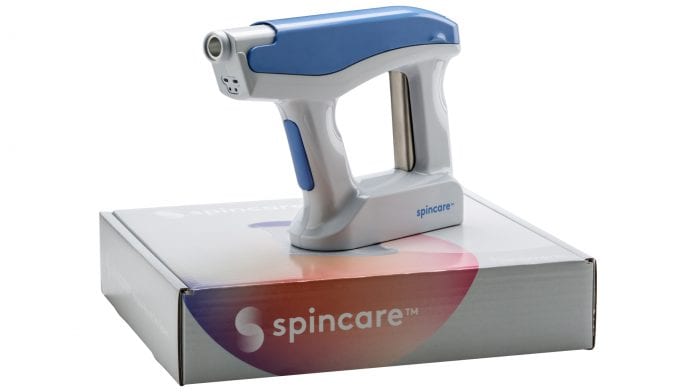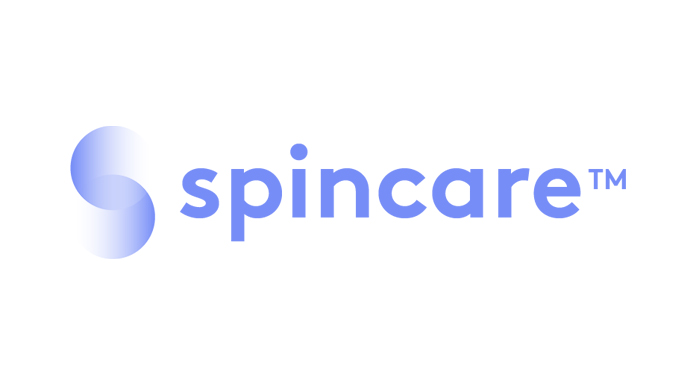
Discover the first comprehensive therapy solution with Electrospun Healing Fibers (EFH™) for wound healing and skin regeneration.
Israel-based Nanomedic is a bio-medical therapeutics high-tech company specialising in development, manufacturing, and sale of medical devices based on electrospinning technology. It is focused on the development of Electrospun Healing Fibers (EFH™) with the goal of delivering the next generation of advanced wound care solutions, including embedded cells for tissue regeneration, filling the void of personalised medicine by healing patients rather than just ameliorating symptoms.
“Many are calling us the Spiderman of wound care due to the extraordinary and futuristic nature of our system and we certainly provide a long-time overdue alternative to legacy wound care products,” says Dr Chen Barak, CEO of Nanomedic Technologies.
The EHF™ matrix is intended for the treatment of skin breaches such as wounds, ulcers, partial thickness wounds, donor sites, surgical incisions, superficial partial thickness burns, skin tears, and dermatological lesions.
Founded in 2018, Nanomedic has already begun distributing its wound therapy platform to global healthcare institutions – a potential $18bn (~€14.91bn) market. It is currently available in Israel and 11 European countries and will also begin rolling out to India at the start of 2021, and the United States in mid-2021.
The global pandemic has certainly slowed the global reach, but not the enthusiasm of market desires. Leading hospitals in Switzerland now consider the Spincare as the “standard of care” for facial burns, with others are using it on both burns and chronic wounds. Rambam Hospital in Haifa, Israel, has become the first global centre to use the Spincare as routine protocol for treating burns and chronic wounds in both adults and children.
The Spincare patented platform technology, together with its disposable Spincare Kit, has wide market applications both within and outside the hospital environment. It is CE marked with FDA clearance expected in mid-2021. Nanomedic is committed to advancing the standard of care and helping improve wound healing across the healthcare continuum.
The current global wound care market
Traditional wound care products comprise primarily of non-woven or gauze-based dressings and absorbent pads. Used for treating non-severe wounds and minor abrasions, they are generally available at clinics, medical stores, pharmacies, and even supermarkets. Advanced wound care, on the other hand, is predominantly concerned with keeping wounds moist to encourage healing. They include film and foam dressings, hydrogels, alginates, super-absorbents and hydrocolloids – all with or without antimicrobial properties.
The next step up is an even more exclusive category – dermal replacements – dominated by very few companies, Nanomedic being one of them. These companies are considered to provide the “most advanced level of tissue regeneration.” Synthetic dermal replacements, such as Spincare, is a sub-category of dermal replacements and are distinguished by the ability of the matrix to mimic the extracellular matrix of human skin. Constructed from non-biological molecules and polymers, and printed directly onto a wound, it replicates the properties of normal skin to create a favourable environment for skin regeneration. It is primarily used on clean wounds, ranging from superficial to partial thickness, with most cases requiring just one application.
The need for newer and more effective therapies for chronic wounds has challenged the market for decades, leading to increased research activity, technological innovation, and product development, with the introduction of new and highly advanced methodologies. Rising unmet patient needs, increasing cases of chronic disorders, and escalating numbers of surgical procedures are expected to fuel demand for novel treatment options for wounds in coming years. High-level research and development activities in the industry will also lead to further development of superior wound care products and the release of new and effective therapies for hard-to-heal chronic wounds.
Meanwhile, the rise in demand for novel and advanced wound care products, along with a surge in incidences of trauma and burn injuries, will further stimulate the growth of the market. The development of precision medicine and improved efficiency and clinical benefits are expected to be major drivers for this space.
Printing a ‘Medical Healing Matrix’ – a global first
Leveraging electrospinning technology, Nanomedic has developed the world’s first portable device that enables healthcare professionals to print in real-time a nanofibrous healing matrix directly onto a patient’s wound.
The Spincare Wound Therapy System is a total paradigm shift in the treatment of wounds from superficial to hard-to-heal, chronic, and complex wounds. Enabling a customised one-time application for full coverage of hard-to-dress areas and challenging contours, the Spincare system allows patients to quickly return to active life, with improved mobility and excellent healing and scarring.
Moreover, the Spincare System replaces the traditional wound therapy approach, utilising a skin-like nanofibrous matrix to cover wounds, ushering in a new era for personalised and improved healing. The Spincare System introduces an innovative treatment option into the advanced wound care arena with inherent characteristics and advantages that outperform traditional wound care methodologies. The system us applicable to a vast spectrum of wounds and allowing patients to “live life while they heal!”
The Spincare Wound Care System
Nanomedic’s portable, battery operated Spincare solution is a fully personalised system. Coupled with disposable, single patient polymer-based sterile solution ampules, it enables comprehensive healing through real-time printing of a site-specific nanofibrous matrix directly onto a wound. Spincare utilises proprietary Electrospun Healing Fiber (EHF™) technology to treat even the most severe and complicated wounds with a single application, eliminating the need for painful re-dressings and solving both the short-term and long-term healing challenges.
Nanomedic’s matrix provides a transparent protective physical barrier, allowing for easy monitoring of the healing process while reducing risk of infection. The unique matrix, which structurally mimics the human extracellular matrix, can be enhanced with a variety of additives – from antimicrobial, collagen, and adhesive materials, to embedded human cells – for a wide range of complex clinical applications. Moreover, it is cost-effective and to easy-to-use without a serious learning curve. The EHF™ matrix serves as a temporary skin-like layer until the full healing of the wound with no need to be replaced or changed. It peels off on its own when the wound is healed and serves as a physical barrier against bacteria. The EHF™ printing is done from a distance without any contact between the patient and the medical staff, reducing the risk for infection.
Electrospun Healing Fibers (EFH™) Matrix
The parameters of the Electrospun Healing Fibers (EFH™) are far reaching and, with real-time printing, the ultimate wound therapy solution. The matrix possesses a number of key characteristics, including:
- No contact, one-time application which reduces risk for infection
- Excellent drug delivery and slow-release system for a wide range of products, clinical needs, and multiple applications
- Excellent adherence to wounds, even in hard to dress contours
- Allows for early showers 24-48 hours post-application
- Cost-effective
- Fully personalised and tailored to patient condition, wound size, and geometry
- Transparent for easy monitoring of the healing progress
- Reduced risk of infection with the EHF™ protective physical matrix
- No need for pre-planning or holding large stocks of various sizes and shapes
The unique structure of the printed EHF™ matrix present a variety of additives – from antibacterial, collagen, and adhesive materials to embedded human cells – treating the most severe and complicated wounds.
Nanomedic is in constant development and will continue creating a variety of disposable ampules for medical and non-medical conditions. The EHF™ matrix is an excellent platform for drug delivery and slow release of therapeutics into wounds and skin lesions, expanding the potential of the technology for additional significant markets such as aesthetics and cosmetics.
So why is the market demanding the Spincare?
There are considerable economic and clinical factors driving the market for its utilization both in hospitals and clinics. With the increasing cost of health care and the need for new and advanced technologies to counter this burden, health systems are looking for alternative therapies. These include, but are not limited to:
- Increased awareness amongst physicians on the benefits of synthetic dermal replacements products as patients find it easier and more comfortable to use than traditional dressings
- Synthetic dermal replacements matrices ensure long-term benefits in terms of expenses, quality of life, cross-infections, and HCP workflow
- With an increase in the average lifespan and affluence, there has been a spurt in lifestyle-associated diseases such as obesity and diabetes increasing the need for more personalised therapies
- As a result of social media, a shift to home care, and an overall awareness of synthetic dermal replacements, treatment has drastically improved resulting in an increase in demand for these products
- The Spincare and other new wound care treatments using synthetic dermal replacements have the potential to significantly reduce costs for the treatment of complex wounds
- Globally, healthcare systems have been shifting from traditional to modern treatment techniques and encouraging the use of synthetic dermal replacements techniques to reduce complications. As an example, the Centers for Medicare and Medicaid Services in the United States recently added a new Current Procedural Terminology (CPT) code to encourage its use
The future of wound care
As Nanomedic’s technology continues to advance and medical acceptance grows, the company is expanding its reach outside the medical scope itself.
“Interest in non-medical areas, including aesthetics, cosmetics, and veterinary, are also of great interest to us, with a number of global companies contacting us for co-development projects,” says Dr Gary J. Sagiv, Vice President of Marketing and Sales. “That is not to say we are leaving the medical world – not at all. The EHF™ matrix with its embedded therapeutic additives, from antibacterial and collagen, to skin regeneration embedded cell therapy, is an excellent drug delivery and slow-release system for a wide range of products, clinical needs, and multiple applications. Thus, there are many more areas for us to discover.”
Wounds of every kind will be with us for generations to come, with numbers rising disproportionately in developing countries. Easy to use and cost-effective modern technology is there to assist, and the Spincare will be viewed as a critical tool in many of these countries.
Nanomedic is pushing the envelope when it comes to health challenges and, with its innovative and experienced team, is bringing to market futuristic medical technology. Nanomedic provides physicians with the most advanced wound care options for safe and decisive patient care when bodily health is at stake. The company’s validated technology is key for understanding the future direction of wound care, thus enabling informed intervention for better clinical results and patient care.










hi, how much does it cost? how we may buy it?